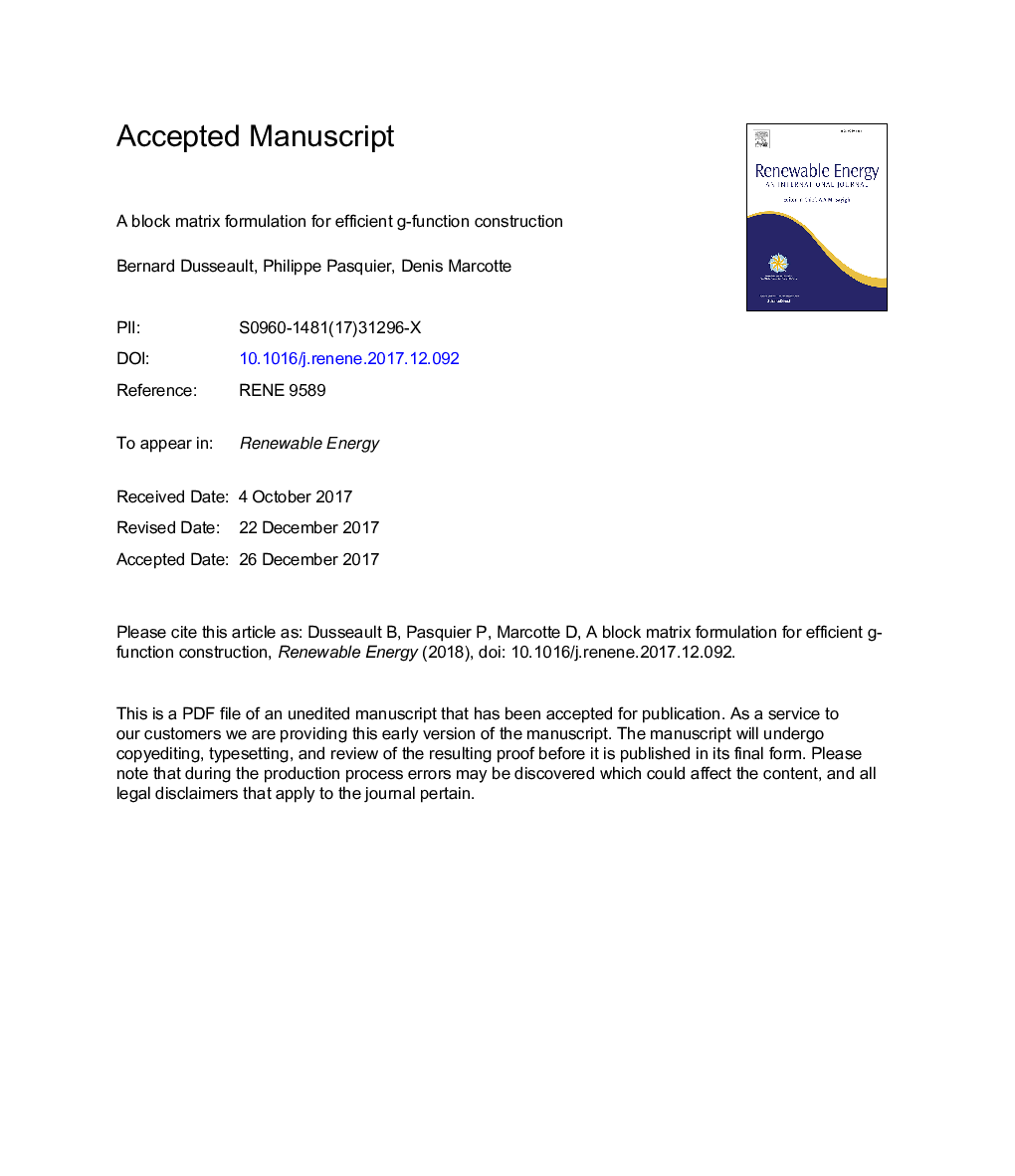| Article ID | Journal | Published Year | Pages | File Type |
|---|---|---|---|---|
| 6764738 | Renewable Energy | 2018 | 38 Pages |
Abstract
A compact block matrix formulation allowing fast construction of the g-function of a ground heat exchanger is presented. This new formulation is nor sequential nor iterative, doesn't require use of Laplace or Fourier transform and provides a g-function by solving a single system of linear equations assembled in a block matrix system. A method to accelerate the integration of the finite-line source model based on Chebyshev polynomials is also introduced. Although it suffers from a fixed cost in terms of computational time, this approach allows to speed up the g-function assessment even further when used jointly with the block matrix formulation on large fields. By using both strategies, constructing the g-function of a ground heat exchanger composed of 50 regularly spaced boreholes can be achieved in less than half-second while committing only a small relative error. The speed and compactness of the block matrix formulation could be useful to design ground heat exchangers with optimization-based algorithms, which can require the assessment of several thousand g-functions.
Related Topics
Physical Sciences and Engineering
Energy
Renewable Energy, Sustainability and the Environment
Authors
Bernard Dusseault, Philippe Pasquier, Denis Marcotte,
